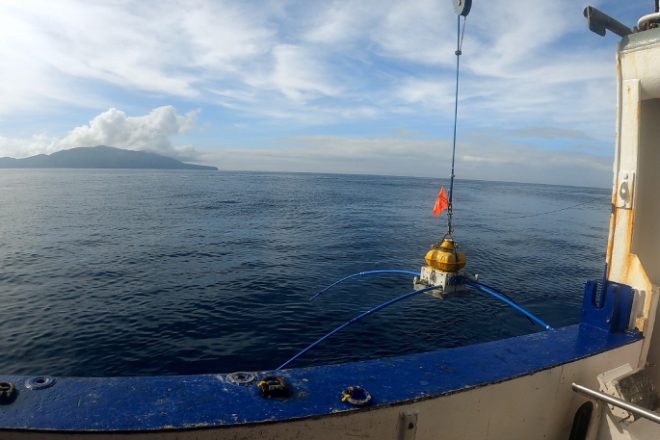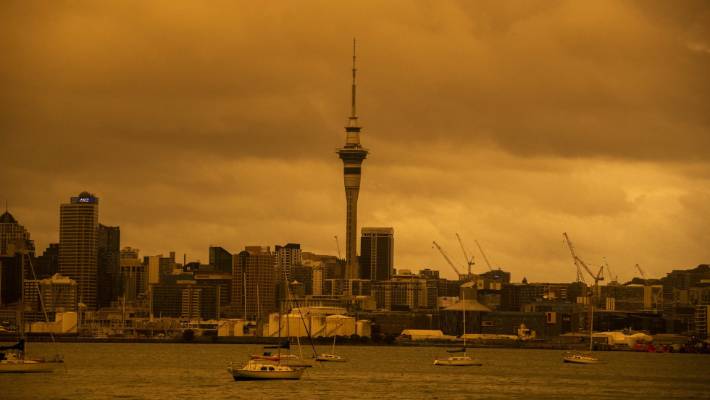Tàu nghiên cứu Tangaroa đã bắt tay vào hành trình cuối cùng để nghiên cứu hệ thống núi lửa của núi lửa đảo Whakaari/White và Tūhua/Mayor. Đây là một phần của chương trình Beneath the Waves do GNS Science dẫn đầu. Mục đích là để hiểu sâu hơn về các tác nhân, mối nguy hiểm và tác động của các sự kiện núi lửa tiềm ẩn như tro bụi, luồng nhiệt, sạt lở đất và sóng thần.
Các nhà khoa học từ GNS Science, Viện Hải dương học Scripps và hai Đại sứ BLAKE GNS sẽ lắp đặt 39 trong số 200 cảm biến Điện từ đáy đại dương còn lại từ ngày 28 tháng 3 đến ngày 12 tháng 4. Các cảm biến này sẽ cung cấp hình ảnh của các hệ thống magma cung cấp năng lượng cho núi lửa và xác định các khu vực thông hơi thủy nhiệt hoạt động.
Các chuyến đi trước đây đã cung cấp thông tin mới về tần suất, kích thước và nguyên nhân của các vụ phun trào trong quá khứ, theo Craig Miller, nhà địa vật lý núi lửa cao cấp của GNS Science và trưởng nhóm chương trình. Phân tích ban đầu cho thấy bằng chứng về chất lỏng sâu, có thể là magma, ở phía tây bắc của Whakaari. Nếu đúng, điều này có thể ảnh hưởng đến cách núi lửa được theo dõi trong tương lai. Hoạt động địa chấn trong khu vực này có thể cho thấy hoạt động núi lửa gia tăng.
Kết quả sơ bộ từ các mẫu trầm tích đáy biển cho thấy các vụ phun trào lớn hơn trong vài nghìn năm qua so với các vụ phun trào được ghi nhận từ những năm 1800. Nhóm nghiên cứu hiện muốn điều tra xem liệu những vụ phun trào này có đủ lớn để đưa tro đến đất liền hay không.
Dữ liệu từ các cuộc khảo sát dưới nước trước đây đã xác định các vị trí của hoạt động thủy nhiệt trước đó và sự thấm nước hoạt động dưới nước của chất lỏng thủy nhiệt. Những phát hiện này, cùng với các cuộc khảo sát trên không được thực hiện vào đầu năm 2023 bằng hệ thống SkyTem, giúp lập bản đồ hoạt động thủy nhiệt trong quá khứ và hiện tại trên toàn bộ ngọn núi lửa. Thông tin này được sử dụng để tạo ra các mô hình 3-D chính xác cho thấy các khu vực đá bị suy yếu và nơi xảy ra sạt lở đất trong quá khứ. Điều này rất quan trọng vì lở đất có thể gây ra một vụ phun trào hoặc gây ra sóng thần.
Craig nói: “Hình ảnh dưới bề mặt đang góp phần vào các mô phỏng và mô hình số mạnh mẽ mà chúng tôi đang bắt đầu sử dụng để đánh giá nhiều kịch bản có thể xảy ra cho Vịnh Plenty từ các sự kiện núi lửa trong tương lai. “Nếu chúng ta có thể xác định xác suất và tác động của những mối nguy hiểm núi lửa này, chúng ta có thể chuẩn bị tốt hơn cho chúng khi chúng xảy ra.”
Chương trình Beneath the Waves là một sáng kiến do GNS dẫn đầu được thực hiện với các cộng tác viên từ các trường đại học và các tổ chức quản lý khẩn cấp khác nhau.





























































